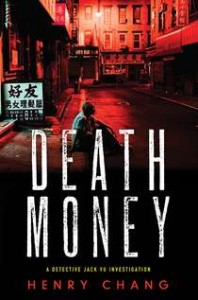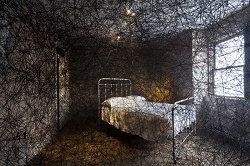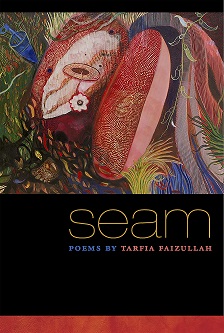 This week we feature the current favorites and obsessions of A.X. Ahmad. He is the author of The Caretaker, the first in a trilogy featuring ex-Indian Army Captain Ranjit Singh. His second book, The Last Taxi Ride, about the murder of a Bollywood actress, will be released June 24, 2014. His short stories and essays have been published in literary magazines and listed in Best American Essays. A.X. was born in Calcutta, India, and educated at Vassar College and MIT. A former architect, he splits his time between Washington DC and Brooklyn, and teaches the Master Novel course at the Bethesda Writer’s Center. More about him at axahmad.com.
This week we feature the current favorites and obsessions of A.X. Ahmad. He is the author of The Caretaker, the first in a trilogy featuring ex-Indian Army Captain Ranjit Singh. His second book, The Last Taxi Ride, about the murder of a Bollywood actress, will be released June 24, 2014. His short stories and essays have been published in literary magazines and listed in Best American Essays. A.X. was born in Calcutta, India, and educated at Vassar College and MIT. A former architect, he splits his time between Washington DC and Brooklyn, and teaches the Master Novel course at the Bethesda Writer’s Center. More about him at axahmad.com.
1. The Kati Roll Company
Whenever I’m homesick for India, I head over to The Kati Roll Company in NYC’s West Village. It’s a tiny space up a flight of stairs, it’s brick walls covered with Bollywood posters. It’s often overheated, fragrant with the smell of cooking, and always packed with young desis who have come here, like me, for a taste of home.
I always get two kati rolls: chicken kabab and egg wrapped in a flaky paratha. (If you buy two, it’s cheaper; hey, I’m an immigrant.) In good weather I sit on a bench in nearby Washington Square Park and eat my rolls, and do some people watching, and my two worlds come together.
2. Henry Chang’s NYC ‘Chinatown Trilogy’
 Henry Chang’s NYC ‘Chinatown Trilogy’ inspired me to write mysteries. Henry grew up in Chinatown, and still lives there, and in his books he has created an unforgettable character, Inspector Jack Yu, who is the go-to guy when things go wrong in Chinatown.
Henry Chang’s NYC ‘Chinatown Trilogy’ inspired me to write mysteries. Henry grew up in Chinatown, and still lives there, and in his books he has created an unforgettable character, Inspector Jack Yu, who is the go-to guy when things go wrong in Chinatown.
What I admire about Henry’s writing is that he doesn’t exoticize Chinatown, but takes us beyond the surface and into the complex lives of its inhabitants, all told in a fast-paced, noir-tinged style: “Asians, who made up 11 percent of the city’s population, accounted for 4 percent of the victims, and oddly enough, for 4 percent of the killers. The number four, in spoken Chinese, sounded like the word for to die.” (Year of the Dog: A Detective Jack Yu Investigation)
3. Micropolis: NYC
I recently stumbled across Micropolis: NYC, a Tumblr site started by WNYC reporter Arun Venugopal. It’s a “look at New York City street life, night life, sex, class, ethnicity — and cats!”
I’m hooked on his posts, ranging from a piece on skin lighteners to the dynamics of satire. Recently Arun had a video up on his hidden Indian secret: when alone, he likes to eat with his fingers. That really resonated for me: when I’m in the company of other desis, I’ll dispense with a fork, and I agree with Arun: the food does taste better.
4. The Mattress Factory
 On a recent trip to Pittsburgh, I visited ‘The Mattress Factory”, an old industrial building re-purposed as an art installation space. (Pittsburgh reminded me of what Brooklyn used to be, before it became expensive: full of artists and creative types, who can afford to live and work in 19th- century industrial spaces.) They also own a town house on the same street, which is kept in its original dilapidated state, with fireplaces, peeling wallpaper, and chipped paint.
On a recent trip to Pittsburgh, I visited ‘The Mattress Factory”, an old industrial building re-purposed as an art installation space. (Pittsburgh reminded me of what Brooklyn used to be, before it became expensive: full of artists and creative types, who can afford to live and work in 19th- century industrial spaces.) They also own a town house on the same street, which is kept in its original dilapidated state, with fireplaces, peeling wallpaper, and chipped paint.
The Japanese artist Chiharu Shiota has transformed this space. Each floor holds piles of abandoned suitcases, old books, chairs, a metal bed, a white bridal dress: all enveloped in thick, enveloping spider webs made out of black yarn. The installation evokes memory in a visceral way: standing in the space, it’s hard not to imagine the lives of the people who once lived here.
5. Bhi Bhiman’s Bhiman
While writing my most recent novel, I listened endlessly to Bhi Bhiman’s album, Bhiman. He’s Sri Lankan American and grew up in the South, and his folk-rock sound is all his own, soulful and mythical.
His music video, “Guttersnipe”, about a homeless boy riding the trains, is filmed in India, and evoked for me memories of my dusty boyhood train rides across the country.
6. Seam by Tarfia Faizullah
 I’ve been reading and re-reading Tarfia Faizullah’s debut book of poetry, Seam, and I can’t get her voice out of my head. Her poems are both intimate and panoramic, and give a voice to a little known atrocity: in the 1971 Liberation War, when Bangladesh separated from Pakistan, the Pakistani army used rape and sex-slavery as a military tactic, destroying the lives of many Bangladeshi women.
I’ve been reading and re-reading Tarfia Faizullah’s debut book of poetry, Seam, and I can’t get her voice out of my head. Her poems are both intimate and panoramic, and give a voice to a little known atrocity: in the 1971 Liberation War, when Bangladesh separated from Pakistan, the Pakistani army used rape and sex-slavery as a military tactic, destroying the lives of many Bangladeshi women.
Tarfia, Texas born, travels to Bangladesh and takes her own pain and compassion and interviews these women, giving them voices, and creating real, heartfelt art in the process. One of her interview poems shared in the Paris Review starts: “Each week I pull hard / the water from the well, / bathe in my sari, wring / it out, beat it against / the flattest rocks—Are you / Muslim or Bengali, they / asked again and again. / Both, I said, both.”













